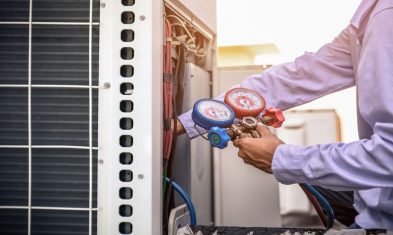As an established HVAC business, ensuring the success of your installations is key to reaching the next level of success in your business. Having a comprehensive HVAC installation checklist can help streamline your processes, improve efficiency and ensure customer satisfaction.
In this blog, we’ll explore the top 10 must-have items that should be on your HVAC installation checklist to help you:
- Ensure your technicians are set up for success on every installation job
- Deliver exceptional service to your clients
- Boost your business with efficiency
Why Use an HVAC Installation Checklist?
Before diving into the checklist itself, let’s find out WHY having an HVAC installation checklist is crucial for your business. An installation checklist serves as a roadmap for your technicians, ensuring that each step of the HVAC installation process is completed thoroughly and accurately.
By following a checklist, you can:
- Minimize errors
- Reduce callbacks
- Deliver consistent results
This will ultimately boost customer satisfaction and loyalty.
1. Site Assessment
Before beginning any installation, it’s essential to conduct a thorough site assessment. This includes:
- Evaluating the location of existing HVAC systems
- Identifying any potential obstacles or challenges
- Determining the best placement for new equipment
2. Load Calculation
Accurately calculating the heating and cooling load for the space is essential to ensure that the HVAC system is properly sized.
Using load calculation software or manual calculations (such as J Load) based on square footage, insulation levels and other factors will help determine the appropriate equipment size for optimal efficiency and comfort.
3. Equipment Selection
Selecting the right HVAC tools and equipment for the job is critical for the success of the installation. When choosing equipment to meet your client’s needs and budget consider factors such as:
- Energy efficiency
- Capacity, brand reputation
- Warranty coverage
4. Ductwork Design
Proper ductwork design is essential for efficient airflow and comfort throughout the space.
Ensure that duct sizing, layout and insulation meet industry standards and local building codes to prevent issues such as:
- Air leaks
- Hot or cold spots
- Excessive noise
5. Electrical Wiring
Ensure that the electrical wiring and connections for the HVAC system are installed correctly and meet safety standards. Verify proper voltage, wire sizing and grounding to prevent electrical hazards and equipment malfunctions.
6. Refrigerant Charge
Properly charging the refrigerant in air conditioning systems is crucial for optimal performance and efficiency. Use manufacturer guidelines and industry best practices to measure and adjust the refrigerant charge as needed during installation.
As always, make sure that equipment being installed is up to the recent SEER2 codes.
7. System Startup and Testing
After installation is complete, thoroughly test the HVAC system to ensure that all components are functioning correctly. This includes running the system through heating and cooling cycles, checking for proper airflow and temperature control and verifying system pressures and temperatures.
8. Air Quality Testing
Conduct air quality testing to ensure that the indoor air meets health and safety standards. Test for pollutants such as carbon monoxide, volatile organic compounds (VOCs) and particulate matter to ensure a healthy indoor environment for occupants.
9. Customer Walkthrough
Before completing the installation, conduct a walkthrough with the customer to review the newly installed HVAC system. Provide instructions on system operation, maintenance requirements and warranty coverage. Then, address any questions or concerns the customer may have.
A new furnace or AC system is a big purchase so make sure the customer is satisfied and everything is running smoothly. It’s also a good time to make the customer aware of maintenance agreement plans.
10. Documentation and Follow-Up
Finally, ensure that all installation documentation, including equipment manuals, warranties and service records, is provided to the customer. Follow-up with the customer after installation to ensure their satisfaction and address any issues or concerns.
BONUS Pro Tip: Service Software
Top shelf service software can drastically improve efficiency and reduce costs. For example, is your field service business using the best software to optimize efficiency?
With FieldEdge, you’ll have the power to simultaneously save valuable time and money. Here are some of the next-level features:
- Performance Dashboards: Shows a snapshot of your business, including sales, service agreements and profitability.
- Customer Management: Review all completed jobs and confirm what equipment your crew used. Also, use images to show homeowners what problems exist.
- QuickBooks Integration: Every transaction flows into QuickBooks—completely eliminating double data entry.
- Service Agreements: A complete picture of when service agreements are due for renewal, billing and scheduling. Send reminders and invoices automatically.
- Price Presentation: Price books help techs sell additional equipment and services.
- Quotes & Invoices: Reduce unpaid invoices, get paid faster and identify your top performers.
- Mobile CRM: Run your business from anywhere, create work orders on-the-go and dispatch techs from your mobile device.
See how FieldEdge can help boost your business. Book your FREE personalized demo today!
Your HVAC Installation Checklist Is Ready To Go!
Having a complete HVAC installation checklist in place is essential for the success of your business. By following these 10 must-have items on your checklist, you can streamline your installation processes, improve efficiency and deliver exceptional service to your clients.
Here are a few key takeaways:
- A comprehensive checklist ensures you are covering all your installation bases
- By following each step consistently you’ll increase profits and customer satisfaction
- HVAC software is a game changer for businesses with its own roadmap for success
Remember, attention to detail and thoroughness are key to achieving customer satisfaction and building a reputation for excellence in the HVAC industry. Check all the boxes to grow your business using your new HVAC installation checklist!




